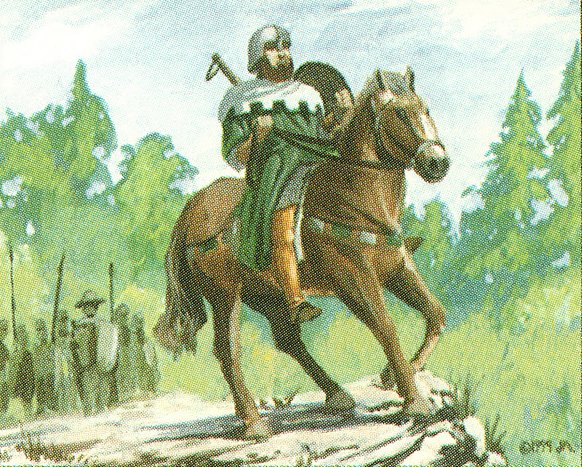Legends Legends - Adun Oakenshield

Welcome again to Legends Legends! Today, we're digging up the graves of one of Magic's most iconic creature types, the Lhurgoyf, and brewing a Jund deck around these oddball card-type-counters. Our commander this week is Adun Oakenshield
The 'goyfs care about the number of card types in our graveyard, but not necessarily the total number of cards in our graveyard. Can we go for quality over quantity with our self-mill strategy? Let's find out!
General Thoughts
Adun Oakenshield
Oakenshield's value lies in his repeatable effect; though costly compared to something like Tortured Existence
Once we've assembled all nine card types in our graveyard, we'll swing in with an army of 9/10 Goyfs, confident in our ability to return them to play should they be destroyed.
Milling and Card Types
There are nine card types that the Lhurgoyf creatures count when determining their power and toughness. These include the obvious ones, like creature, enchantment, land, instant, sorcery, and planeswalker. The release of the battle cards added another type to the list, and a little-known fact is that kindred (formerly tribal) counts as a separate card type despite not appearing on any card by itself. The trick to this deck will be milling the specific card types we need to maximize our Goyfs' stats.
Surveil makes it easy to see what we're about to mill into, so the simple Sinister Starfish
We aren't too overly concerned with milling the wrong cards, per se, since Adun Oakenshield
Ripples of Undeath
Bramble Familiar
Smuggler's Surprise
Angel of Suffering
Milling directly from our library isn't the only way to fill our graveyard. Often, we'll want to discard a specific card type; that's where Liliana of the Veil
Tortured Existence
Perhaps I've buried the lede here, but our absolute number one best way to mill a massive amount of cards each turn is Hermit Druid
Finally, we're replacing the traditional removal and interaction spells in this deck with more thematic mill-based spells. Drown in Filth
Goyfs
The meat and potatoes of this deck are the Lhurgoyfs, those weird-looking creatures with a graveyard affinity that, to my knowledge, are completely unique to Magic. The name was invented when the original Lhurgoyf
Besides their namesake, we're running every other Goyf we could possibly fit in this deck, including several of the subpar ones! Detritivore
Mortivore
The infamous Tarmogoyf
Polygoyf
Pyrogoyf
Barrowgoyf
Necrogoyf
Nethergoyf
Even though we're running a measly nine Goyfs, there are two important cards we can use to stretch that number. The first is Tarmogoyf Nest
The second is one of my favorite new cards, and indeed, one of the staples holding this deck together. Disa the Restless
Finally, don't forget our Altar of the Goyf
Delirious Returns
With so many cards going to our graveyard, we'd be foolish not to include some Delirium and general self-mill synergy spells.
Duskmourn's Winter, Misanthropic Guide
Syr Konrad, the Grim
Deadbridge Chant
Budget
This Legends Legend is on the more expensive end to build, due in part to the steep cost of Adun Oakenshield
Adun Oakenshield Deck List
Adun OakenGoyf
View on ArchidektCommander (1)
Lands (36)
- 1 Akoum Refuge
- 1 Blood Crypt
- 1 Bojuka Bog
- 1 Cinder Glade
- 1 Command Tower
- 1 Commercial District
- 1 Dakmor Salvage
- 1 Evolving Wilds
- 1 Fabled Passage
- 5 Forest
- 1 Golgari Rot Farm
- 1 Gruul Turf
- 1 Jungle Hollow
- 1 Kessig Wolf Run
- 3 Mountain
- 1 Overgrown Tomb
- 1 Rakdos Carnarium
- 1 Raucous Theater
- 1 Riveteers Overlook
- 1 Rugged Highlands
- 1 Savage Lands
- 1 Smoldering Marsh
- 1 Stomping Ground
- 3 Swamp
- 1 Terramorphic Expanse
- 1 Twisted Landscape
- 1 Underground Mortuary
- 1 Ziatora's Proving Ground
Artifacts (9)
Creatures (24)
- 1 Angel of Suffering
- 1 Anger
- 1 Arbor Elf
- 1 Barrowgoyf
- 1 Bramble Familiar // Fetch Quest
- 1 Detritivore
- 1 Disa the Restless
- 1 Hermit Druid
- 1 Ignoble Hierarch
- 1 Lhurgoyf
- 1 Mortivore
- 1 Necrogoyf
- 1 Nethergoyf
- 1 Nyx Weaver
- 1 Polygoyf
- 1 Pyrogoyf
- 1 Sakura-Tribe Elder
- 1 Sinister Starfish
- 1 Six
- 1 Skull Prophet
- 1 Syr Konrad, the Grim
- 1 Tarmogoyf
- 1 Timeless Witness
- 1 Winter, Misanthropic Guide
Enchantments (8)
Instants (6)
Sorceries (9)
Battles (3)
Planeswalkers (4)
Wrap Up
The Lhurgoyf has always mystified and enraptured me. What is that thing? Why does it look like that? When will we get some lore explaining where the Goyfs come from, or what they're doing on multiple planes? These are questions that'll remain unanswered until we see an announcement for Secret Lair: Goyfs.
This Adun Oakenshield
What are your favorite Goyfs? Does Adun Oakenshield
Thanks for reading!